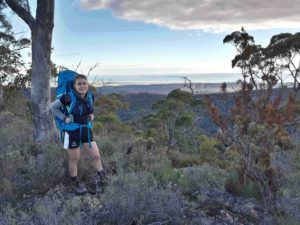
Fresh insight gleaned from rocks and soil mapped across Israel will help reveal more information about ancient humans, animals and evolution in the Middle East region.
Strontium is an element found in a range of natural materials in a variety of forms, known as isotopes. It’s incorporated into soils and water as rocks break down, and ultimately consumed by animals and humans.
The isotopes become a part of human bones and teeth through time as a result, and maintain a fingerprint in the environment when they were formed.
'Fingerprint' of early migration from #Africa in #Israel found in study with strontium isotopes 'will have a really big impact on #archaeology in the region for many years to come,' archaeologist Dr. Ian Moffat @Archaeometry says pic.twitter.com/kK0WJX3vo2
— i24NEWS English (@i24NEWS_EN) August 20, 2020
Flinders University Research Associate Dr Rachel Rudd says a new strontium isotope dataset composed from collections of rocks and soils across Israel will have important applications in archaeological research which provides important insights into the movements of ancient societies, funded through the Australian Research Council’s Discovery Grants.
“It’s absolutely crucial data for working out how far early humans and animals were moving around the landscape in a place that has many of the most important archaeological sites for understanding human evolution.”
“To do so, it is necessary to create maps of the strontium isotopes found in the region, which are used for interpreting the composition of the remains. Israel has many archaeological sites of great importance for understanding human evolution, and the results of this study will assist in furthering this research,” says Dr Rudd.

This database provides the first comprehensive collection of bioavailable soil and rock in Israel, including the Golan Heights, a fertile landscape near the Sea of Galilee that has been claimed by both Israel and Syria since the Six-Day War in 1967.
Soil and rock samples were collected throughout Israel in September and October 2008 with locations chosen with reference to a digital geological map of Israel using the Old Israel Grid co-ordinate system.
60 soil samples were collected and analysed, with grain size, sphericity, roundness, grain sorting, Munsell colour and pH recorded in the field while 48 rock samples were analysed from the principle geological unit present at each site and a brief description of the lithology made in the field.
The data set can be viewed and downloaded on the IRHUM (Isotopic Reconstruction of Human Migration) database

